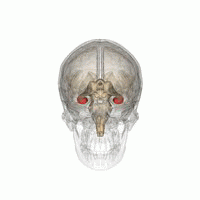Chronic neurodegenerative disorders, such as Alzheimer's disease and cerebrovascular disease, are common conditions in older people. The treatment of these conditions is aggravated by the relatively high prevalence of systemic comorbidity, which is detected in more than half of patients over 65 years of age in several surveys.
Coexisting neuropathological markers of Alzheimer's disease and cerebrovascular disease are found at autopsy in the majority of brains of many cohorts of patients clinically diagnosed with Alzheimer's disease.
A recent study, of over two hundred participants, showed the association of image markers of cerebrovascular disease, including cortical cerebral microinfarctions, with an increased risk of cognitive decline and atrophy in patients diagnosed with Alzheimer's disease.
Notably, clinical signs of the interaction of Alzheimer's disease and cerebrovascular disease can be attributed to the archetypal study Nun. A longitudinal study of aging and Alzheimer's disease of nuns was initiated in 1986 by Snowdon. The homogeneous lifestyle of the nuns makes them an ideal study population. The convent archives were made available to the investigators as a resource on the history of the participants. The study included the administration of memory and cognitive tests to nuns (some over 100 years old) and the post-mortem examination of their brains. The results of this study showed that the coexistence of rare markers of Alzheimer's disease with minor ischemic damage was associated with exacerbated dementia compared to patients diagnosed with only one or the other of the conditions.

The hippocampus, one of the only cerebral structures, is one of the first structures affected in Alzheimer's disease, which explains the memory problems and disorientation that characterize the appearance of this neurodegenerative pathology. People with severe damage to the hippocampus are likely to suffer from different types of amnesia.
Scientists from the Instituto de Biofisica da UFRJ in Rio de Jaeiro, have developed an in vitro model of cerebrovascular disease co-morbid with Alzheimer's disease. This model involves organotypic cultures of the hippocampus, combining subtoxic oxygen-glucose deprivation (OGD) with exposure to subtoxic concentrations of amyloid oligomers (AβO).
This approach was designed to simulate early subclinical conditions that may precede the diagnosis of mild cognitive impairment, assuming that such subclinical conditions may be associated with minor vascular insufficiency and / or low AβO levels.
Scientists have developed an in vitro model of comorbid cerebrovascular disease / Alzheimer's disease applied to organotypic cultures of hippocampi, by combining subtoxic oxygen-glucose deprivation with exposure to also subtoxic concentrations of amyloid oligomers (AβO) Alzheimer's disease, toxins that build up in the brain and are believed to trigger synapse damage and cognitive impairment in Alzheimer's disease.
Using this experimental model, the scientists then studied in more detail the roles of glutamate receptors, which have been implicated in many approaches to cerebrovascular disease and Alzheimer's disease.
These results revealed a hitherto unappreciated synergy between subtoxic oxygen-glucose deprivation and AβO, and unveiled the complex roles of glutamate receptors on neurodegeneration in the hippocampus under conditions that mimic early and early cerebrovascular disease. comorbid / Alzheimer's disease. The results thus showed that:
- subtoxic insults by oxygen-glucose deprivation and AβOs synergize to induce marked reductions in synaptic proteins in the absence of cell death.
- the effects of glutamate receptor antagonists in the combined presence of subtoxic oxygen-glucose deprivation and AβO are complex and rather distinct from previous reports of their effects on experimental models of cerebrovascular disease or Alzheimer's disease alone .
Their results unveiled the complex roles of glutamate receptors on neurodegeneration in the hippocampus under conditions that mimic early and co-morbid cerebrovascular disease / Alzheimer's disease.

